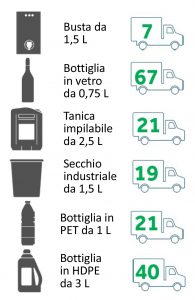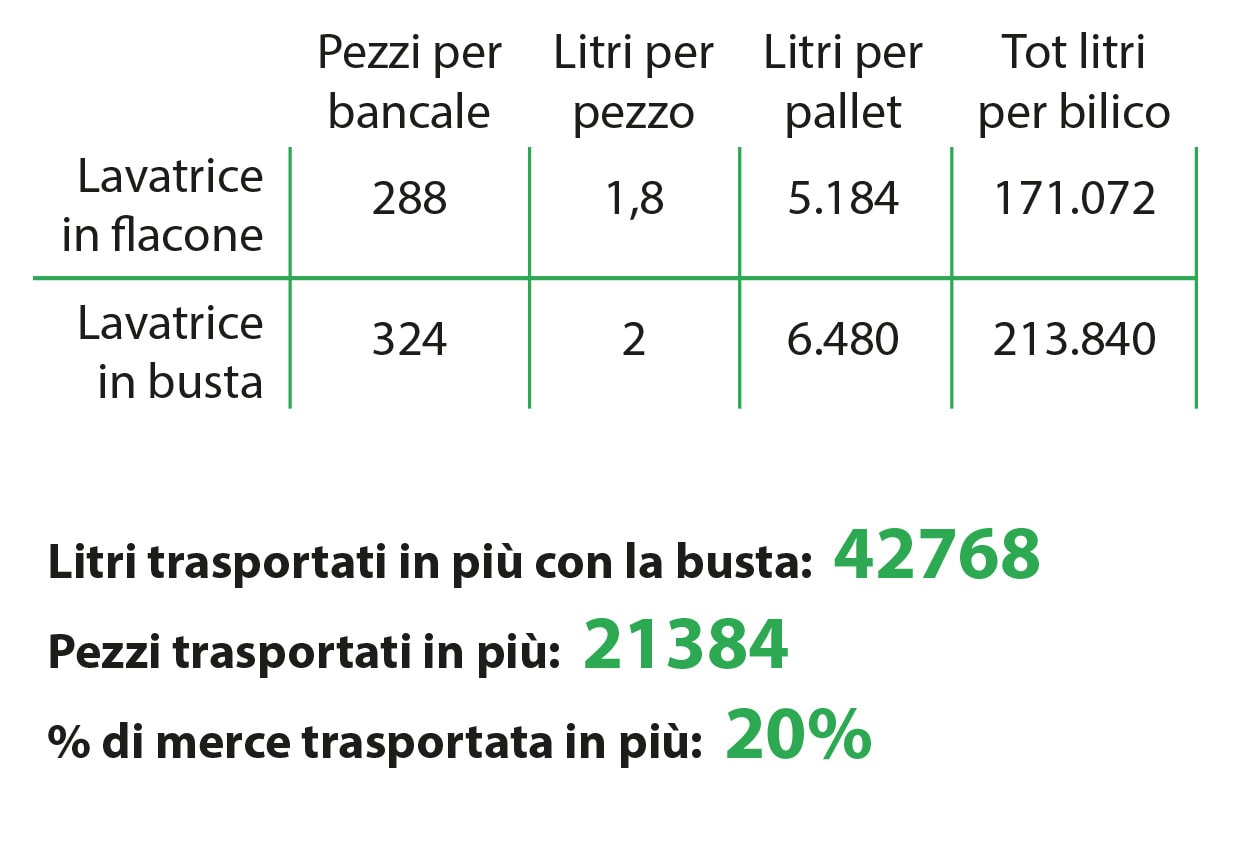lavanderina
The packaging
Today, packaging is defined as “ecological” when it uses recyclable materials and limits the use of plastic from petroleum, but is this really enough?
It is certainly an important first step that we ourselves undertake to follow, but it is not enough: there are still many wastes on which it is important to investigate in order to find sustainable solutions.
One of these is the transport and storage of packaging, given that, if the product is bulky, it requires a greater number of transports and more materials necessary for transport, therefore, waste on a large scale, where the most polluting factor is the excessive emission of CO2 into the air.
The solution by Lavanderina
For our products, we decided that the solutions on the market were not in line with our philosophy. The packaging we use comes from our innovative patent, practical for use and above all excellent for reducing transport and environmental impact and, therefore, pollution.
Our bottles
THE MATERIALS
Our bottles contain recycled plastic obtained from separate collection and their labels are made exclusively of plastic born from a vegetable source (from the processing of food waste from sugar cane).
THE SHAPE
The line of the bottle, reminiscent of the L of Lavanderina, repeats a wave shape on both sides, so that design is not simply captivating, but also sustainable: by placing several bottles side by side, they fit together perfectly.
THE ECOLOGICAL ASPECT
The line of Lavanderina bottles offers the possibility of significantly saving on logistics and transport, as it fully utilizes the space of secondary packaging, considerably reducing the number of trucks required for transport.
The refill envelopes
THE MATERIALS
The production of bags requires much less plastic than bottles: the bags weigh 38.5 g against the 93 of a bottle of the same volume and the packaging-product ratio is very low (less than 5%, 2-5 times lower than alternative solutions).
THE SHAPE
In contrast to the more classic form that is commonly used in the world of detergents, this solution has several qualities:
1. It has the tap placed towards the base of the bag, which facilitates the use of the product.
2. The vacuum filling, added to its four-sided base, allows the container to be completely filled.
1. It has the tap placed towards the base of the bag, which facilitates the use of the product.
2. The vacuum filling, added to its four-sided base, allows the container to be completely filled.
THE ECOLOGICAL ASPECT
Our bag is ecological because: the dosing tap allows correct dosage without waste, the vacuum system optimally protects the product by maximizing its duration and allowing the use of fewer preservatives in the formula, the bag does not waste space when it is empty, because it is flat, and when it is full, because it exploits all the volume and therefore the space it occupies.
WHEN THE BAG IS EMPTY:
We have calculated how many trucks are needed to transport the packaging required to fill one million liters of product.
Unlike bottles, the bags are delivered “flat”: an important feature for saving space, requiring less transport and therefore emitting much less CO2 into the air.

WHEN THE ENVELOPE IS FULL:
Even after filling, the contents / occupied volume ratio of the bottles is not as efficient as that of the bags, which use almost all the volume that liters.
You can see it well in this comparison with our old Washing Machine Bottle:

Patent application for industrial invention 102021000021890.
The flexible packages produced by Laboratorio Officinale Srl and their possible modifications and construction variants are protected by the Italian patent application 102021000021890.
Therefore, the production, marketing, distribution and sale of the flexible packages of Laboratorio Officinale Srl and their manufacturing variants are an exclusive right of the licensee company Laboratorio Officinale Srl.

